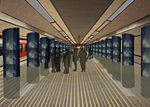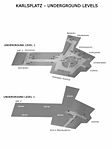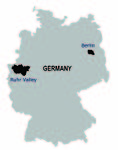Underground Landscapes: Difference between revisions
| Line 94: | Line 94: | ||
* Which measures would be necessary for enhancing the awareness for the area? | * Which measures would be necessary for enhancing the awareness for the area? | ||
* Students are free to choose their method. | * Students are free to choose their method. | ||
<gallery caption=" " widths="150px" heights="150px" perrow="5"> | |||
Image:yourimagename.jpg|your image text | |||
Image:yourimagename.jpg|your image text | |||
Image:yourimagename.jpg|your image text | |||
Image:yourimagename.jpg|your image text | |||
Image:yourimagename.jpg|your image text | |||
</gallery> | |||
''Please publish your findings here'' | ''Please publish your findings here'' | ||
Revision as of 15:59, 12 December 2011
---> back to overview of Case Study List
add long title of your theme
Short Introduction to the Area of Study
Karlsplatz is one of the busiest stations in Munich as in 2009, 351 million passengers rode the U-Bahn. This is why it is one of the most important landmarks in Munich and therefore an everyday landscape both for locals and tourists. Since its construction in the early 1970s it developed as a “city within the city “. It houses a shopping center, bank, food courts and ticket counters in 5 levels underground, differentiated by color and texture in order to make the experience of the travelers an easier and better one, as well as in above ground it connects to the main tourist’s attractions and the shopping district. Its importance is emphasized by the fact that all public transport lines intersect in this point, making it a very known place by the people that pass through it every single day and somehow do not consider it as “their everyday landscape”.
Exercise 1: Sketching the Landscape
Time frame: October 25 - November 15, 2011
Student activities:
- Creation of analytical drawings and sketches
- Presentation of results
Please upload a selection of your drawings/sketches/mental maps and add them to the image gallery
Exercise 2: Landscape Layers
Time frame: November 15 - 29, 2011
- time based changes and 'landscape biography', and/or:
- topography, open spaces, built, green, traffic and water structures on different layers. *Definition of zones with coherent character
- Description of this character.
Please publish your findings here
Exercise 3: Behaviour Patterns
Time frame: December 6 - 20, 2011
- How do people behave in this area? How do they use the space? What is important for them?
- Observation of study area, interviews with local people and mapping of use patterns.
- Preparation of short presentation
Please publish your findings here
- Xx.jpg
Underground Textures
- Xxx.jpg
Everyday paths
Exercise 4: Communication Concepts
Time frame: December 19, 2011 - January 17, 2012
- Based on the different landscape assessment approaches students will develop a communication concept for their area of study
- Which measures would be necessary for enhancing the awareness for the area?
- Students are free to choose their method.
- Yourimagename.jpg
your image text
- Yourimagename.jpg
your image text
- Yourimagename.jpg
your image text
- Yourimagename.jpg
your image text
- Yourimagename.jpg
your image text
Please publish your findings here
Image Gallery
- Yourimagename.jpg
your image text
- Yourimagename.jpg
your image text
- Yourimagename.jpg
your image text
- Yourimagename.jpg
your image text
- Yourimagename.jpg
your image text
References
* Please make sure that you give proper references of all external resources used.
* Do not use images of which you do not hold the copyright.
* Please add internet links to other resources if necessary.
About categories: You can add more categories with this tag: "", add your categories













